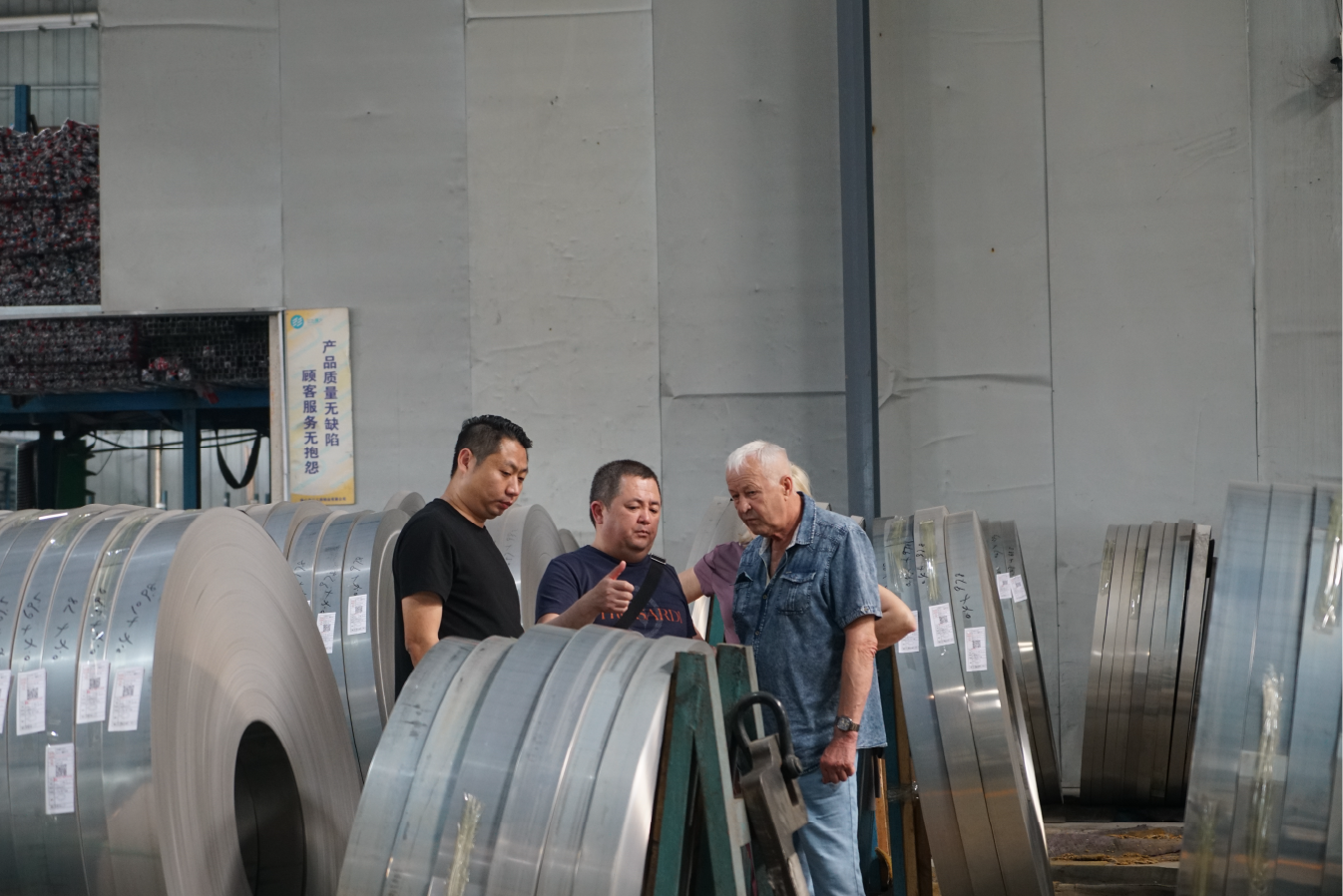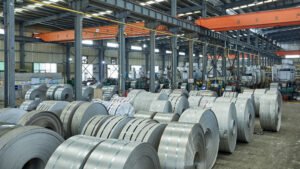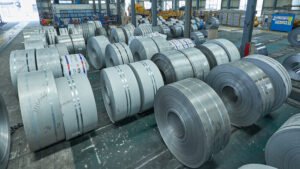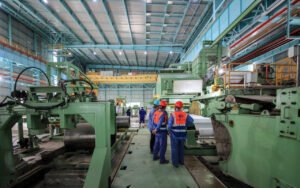Поставка листов из нержавеющей стали с нулевым дефектом для проекта опреснения воды на Ближнем Востоке
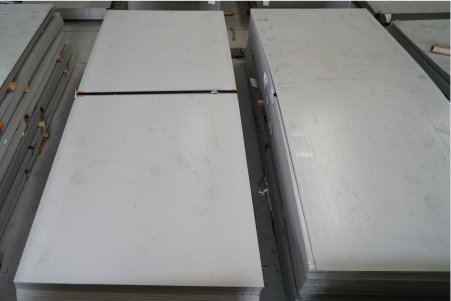
Are you struggling to source consistently flawless stainless steel sheets for critical infrastructure projects? The slightest material imperfection can lead to catastrophic failures, costly project delays, and irreparable damage to your reputation, especially in high-stakes environments like desalination plants where there is no room for error.
A zero-defect stainless steel supply is non-negotiable for Middle East desalination projects. It is the bedrock of preventing corrosion from high-salinity water, ensuring the plant's structural integrity under immense pressure, and guaranteeing the long-term operational reliability and safety of facilities that provide essential freshwater resources.
The Middle East's future is intrinsically linked to a reliable supply of fresh water, making large-scale desalination not just a project, but a lifeline. The success of these monumental undertakings hinges on the absolute quality of every component. A single flawed steel sheet can initiate a chain reaction of failure, making the pursuit of zero-defect materials a mission-critical objective for every contractor, engineer, and procurement manager involved.
This pursuit presents a significant challenge. On one hand, the demand for high-performance, corrosion-resistant duplex and super duplex stainless steel1 is soaring, driven by multi-billion dollar investments in new desalination capacity across the region. On the other, global supply chains are fraught with inconsistencies, quality control gaps, and logistical hurdles that can compromise material integrity. A seemingly minor, invisible-to-the-eye defect in a steel sheet can have a cascading negative impact on the entire system's longevity and safety. As a leader at MFY, I’ve seen firsthand how an integrated supply chain—from mill to processing to delivery—is not just an advantage, but a necessity to bridge this gap and deliver the perfection these projects demand.
What is the importance of stainless steel in Middle East desalination projects?
Underestimating the role of specific stainless steel grades can lead to premature equipment failure in the harsh, corrosive environments of desalination plants. Imagine critical high-pressure pipelines or storage tanks corroding years ahead of schedule, causing unexpected shutdowns, water shortages, and massive financial losses.
Stainless steel is vital due to its superior corrosion resistance against high-salinity seawater and aggressive processing chemicals. This ensures the longevity, structural integrity, and hygienic standards of critical components like piping, pressure vessels, and heat exchangers, safeguarding the entire plant's operational viability and water purity.
In my experience, specifying materials for a desalination plant is an exercise in preparing for battle against nature's most corrosive elements. The environment inside these facilities is relentlessly hostile. We're talking about high-salinity seawater, often at elevated temperatures and pressures, combined with a cocktail of treatment chemicals. Standard materials like carbon steel would corrode in a matter of months, if not weeks. This is where stainless steel, particularly specialized grades, becomes the undisputed champion. It’s not merely a "good-to-have"; it is the essential foundation upon which the entire plant is built. The selection process moves beyond simple material choice to a strategic decision about long-term reliability. For instance, in Reverse Osmosis (RO) plants, the high-pressure sections where brine is separated from pure water require materials that can withstand both intense pressure and extreme chloride concentrations. Here, duplex and super duplex stainless steels are not just an option, they are the only viable solution for ensuring a service life measured in decades, not years. Choosing a lesser material is a direct gamble on the plant's future.
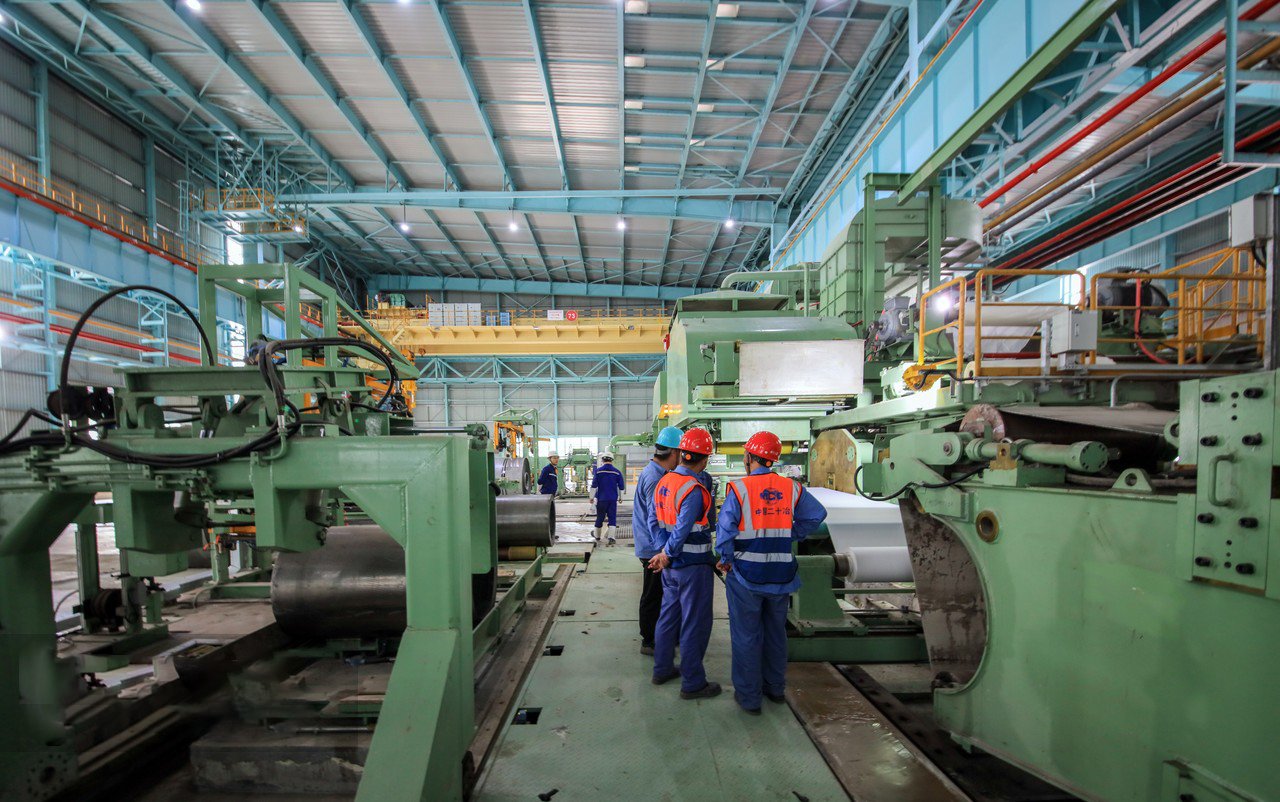
The decision to rely on stainless steel is a multi-faceted one, driven by a synthesis of chemical resistance, mechanical strength, and the absolute need for purity in the final product. In the context of Middle East desalination, where facilities represent national investments in water security, these factors are magnified. The long-term cost of failure far outweighs any short-term savings from using inferior materials, a principle my team and I consistently advocate for with our clients. At MFY, we don't just supply steel; we provide the assurance that this foundational component is perfectly suited for its critical role.
Corrosion Resistance as the Primary Driver
The primary reason stainless steel is indispensable in desalination is its inherent ability to resist corrosion. Desalination processes, whether thermal like Multi-Stage Flash (MSF) or membrane-based like Seawater Reverse Osmosis (SWRO), create environments that are exceptionally aggressive. The main culprit is the high concentration of chloride ions in seawater, which are notorious for causing localized corrosion such as pitting and crevice corrosion, as well as the more catastrophic failure mode of chloride-induced stress corrosion cracking (SCC). A standard stainless steel like Grade 304 would be wholly inadequate. Even Grade 316L, with its added molybdenum content, has limitations in the warmest and most saline environments, such as the Red Sea or the Arabian Gulf.
This is why the industry has migrated towards duplex and super duplex stainless steels. The performance of these alloys is often quantified by their Pitting Resistance Equivalent Number (PREN), calculated as PREN = %Cr + 3.3 * %Mo + 16 * %N. While 316L has a PREN of around 25, Duplex 2205 is near 35, and Super Duplex 2507 exceeds 40. This higher number indicates a significantly more robust defense against pitting corrosion. A project we consulted on for a facility in the UAE illustrated this perfectly. The original design used 316L for a secondary piping system, assuming conditions were less harsh. However, ambient humidity and salt spray from the coastal location led to external corrosion and premature failure within five years, causing an expensive and disruptive unscheduled shutdown for replacement.
Our recommendation in such cases is always to analyze the total lifecycle cost, not just the initial material cost. The superior corrosion resistance of a duplex or super duplex grade translates directly into a longer service life, less maintenance, and—most importantly—uninterrupted operation of a critical water supply. It’s about building for resilience from the very first day. The selection of the right grade of stainless steel is the single most important material decision in the entire construction of a desalination plant.
Ensuring Structural Integrity and Longevity
Beyond chemical resistance, desalination plants demand exceptional mechanical performance. High-pressure pumps in SWRO systems routinely operate at pressures between 55 and 70 bar (800-1000 psi), and this subjects all associated piping, pressure vessels, and valves to immense and constant stress. The material must possess high strength and excellent fatigue resistance to ensure structural integrity over a design life of 25 to 30 years. This is where the microstructure of duplex stainless steels provides a significant advantage. Comprising a mixed austenite-ferrite structure, they typically have twice the yield strength of their austenitic counterparts like 316L.
This higher strength has profound engineering and economic implications. For a given pressure requirement, a piping system can be designed with a thinner wall thickness when using duplex steel compared to 316L. I recall working with an engineering contractor for a large-scale project in Saudi Arabia. Their initial specifications called for a schedule of 316L piping that was quite thick and heavy. By presenting a comparative analysis, we demonstrated that switching to Duplex 2205 would not only meet the pressure requirements with a thinner wall but also result in a significant reduction in overall weight.
This weight reduction led to a cascade of benefits: lower material tonnage and cost, reduced structural support requirements, and faster, easier installation on site. The table below illustrates the stark difference in mechanical properties that makes this possible. The higher strength of duplex grades is not just a feature; it is a key enabler of more efficient, cost-effective, and equally safe designs.
| Недвижимость | Grade 316L (Annealed) | Duplex 2205 (Annealed) | Super Duplex 2507 (Annealed) |
|---|---|---|---|
| Minimum Yield Strength (MPa) | 205 | 450 | 550 |
| Minimum Tensile Strength (MPa) | 515 | 655 | 800 |
| Typical PREN | ~25 | ~35 | >40 |
The client ultimately adopted our recommendation. The project not only came in under budget on the piping scope but also benefited from a system with superior fatigue resistance and corrosion allowance, significantly enhancing the plant's long-term reliability and reducing the risk of failures over its operational lifespan.
Upholding Hygienic Standards and Water Purity
The final product of a desalination plant is potable water, a substance consumed by millions. Therefore, the materials used in the final treatment, storage, and distribution stages must meet the strictest hygienic standards. The material itself must be inert, meaning it cannot leach any harmful elements that could contaminate the water and endanger public health. Stainless steel is the premier choice for this application due to its stable, non-reactive passive layer. This chromium-oxide layer prevents any metallic ions from migrating from the steel into the purified water, ensuring it remains safe and pure.
Furthermore, the surface of stainless steel is exceptionally smooth and non-porous. This characteristic is critical in preventing the formation of biofilms, which are communities of microorganisms that can adhere to surfaces and are notoriously difficult to remove. Biofilm growth in a water system can lead to contamination and poses a significant health risk. The ease with which stainless steel surfaces can be cleaned and sterilized ensures that hygienic conditions can be maintained throughout the plant, meeting stringent global standards like those set by the World Health Organization (WHO).
When compared to alternatives, the advantages of stainless steel become even clearer. Carbon steel, for example, would require internal coatings or linings to prevent rust and contamination. These coatings can degrade, chip, or delaminate over time, requiring re-application and creating a risk of introducing coating particles into the water stream. Some plastics or fiber-reinforced polymers (FRP) may be suitable for lower pressure applications, but they can have limitations regarding temperature, pressure, and potential leaching of organic compounds. Stainless steel, particularly with a smooth finish like a 2B or better, offers a robust, stable, and clean solution that guarantees water purity from the plant to the tap, a commitment we at MFY take very seriously.
Stainless steel prevents corrosionПравда
Specialized stainless steel grades resist chloride-induced corrosion in desalination plants, ensuring decades of service life.
Grade 304 is sufficient for SWROЛожь
Standard 304 stainless steel would fail rapidly in high-chloride environments; super duplex grades are required.
How does the current supply chain support zero-defect stainless steel sheet sourcing?
You need flawless stainless steel for your project, but your current supply chain often feels like a game of chance, with quality varying from one batch to the next. Relying on a fragmented chain of traders and processors introduces multiple points of risk, threatening your project with defects and delays.
The modern supply chain supports zero-defect sourcing through a multi-layered approach: stringent quality control at the mill, advanced material traceability systems, adherence to international standards like ASTM/EN standards, and strategic partnerships with fully integrated suppliers who command the entire process from production to delivery.
The concept of a "zero-defect" supply chain is the ideal we all strive for, but the reality for many in our industry is far from it. The traditional supply model is often fragmented. A trader buys master coils from a mill, which are then shipped to a separate processing center for cutting and finishing. From there, a logistics company handles transport to the port, and another handles the final leg of the journey. While this can work, every single hand-off represents a potential point of failure. It's a chain where communication can break down, quality control can be inconsistent, and accountability can become blurred. A scratch from improper handling at a warehouse or a miscommunication about finishing specifications can compromise an entire batch of material. This is the very problem we at MFY set out to solve. We saw that the only way to truly approach a zero-defect reality was to control as many links in that chain as possible. By integrating raw material trading, cold-rolled processing, and export logistics under one roof, we eliminate the gaps and finger-pointing. We become the single point of accountability for quality, from the moment the steel is produced to the moment it arrives at our client's project site.
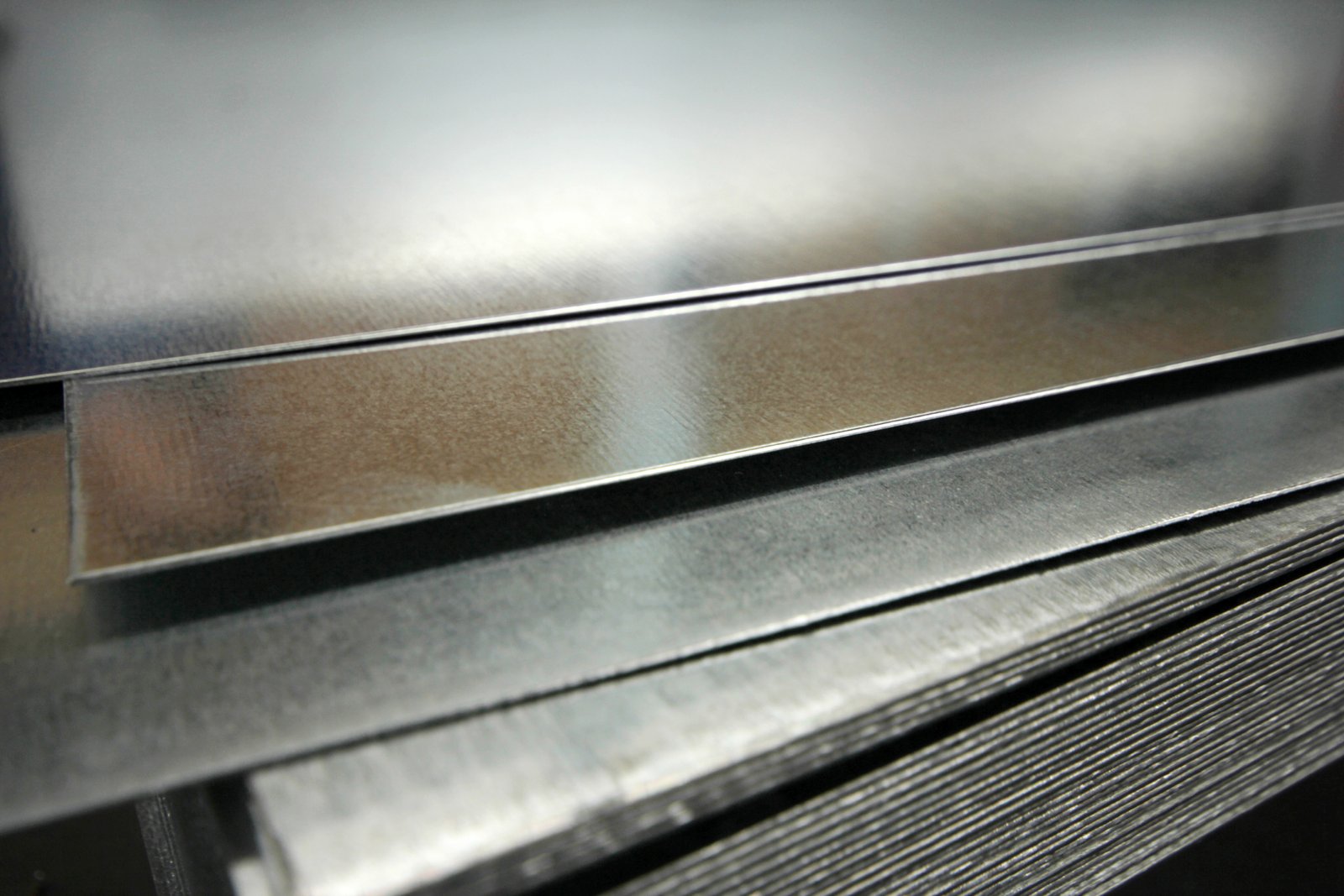
This integrated model is a fundamental shift from the conventional, transactional approach to steel supply. It transforms the relationship from a simple buyer-seller dynamic to a strategic partnership. When a client works with an integrated supplier, they gain visibility and control over the entire process. We can provide detailed reports not just from the original mill, but also from our own state-of-the-art processing and testing facilities. This end-to-end oversight is what allows us to confidently supply materials for the most demanding applications, like nuclear power or, in this case, a desalination plant in the Middle East, where the standard for quality is nothing less than perfection.
The Role of Integrated Mills and Advanced Production
The quest for zero-defect stainless steel begins at the source: the steel mill. It is impossible to correct fundamental flaws in chemistry or internal structure later in the process. That is why sourcing from top-tier, technologically advanced mills is non-negotiable. These facilities utilize sophisticated steelmaking processes like Argon Oxygen Decarburization (AOD)2 or Vacuum Oxygen Decarburization (VOD) to refine the molten steel. These processes allow for precise control over the chemical composition, drastically reducing impurities like sulfur and phosphorus, which can be initiation sites for corrosion and compromise mechanical properties.
Furthermore, modern mills employ advanced continuous casting and hot-rolling technologies that produce coils with exceptional consistency in thickness, flatness, and surface quality. This uniformity is the essential canvas upon which a perfect final product is created. For critical desalination applications, we must go beyond simply accepting a mill's standard certificate. For example, the allowable chromium range in Grade 316L might be 16.0% to 18.0%. For a high-chloride environment, we work with our partner mills to secure production runs that specifically target the upper end of this range, maximizing the material's passive layer and corrosion resistance.
This level of control is something a conventional trader, who simply buys from the open market, cannot offer. At MFY, our deep-rooted relationships and significant trading volume give us direct influence over production parameters. We can specify requirements that exceed the minimums of international standards, ensuring our clients receive material that is not just compliant, but optimized for performance. This proactive, source-level quality control is the first and most crucial step in building a zero-defect supply chain.
The Criticality of Processing and Finishing
A perfect master coil from the mill can easily be downgraded by subpar processing. The journey from a massive coil to precisely cut, finished sheets is where many surface defects and mechanical inconsistencies are introduced if not handled with extreme care. This stage, which includes processes like cold-rolling, annealing (heat treatment), and pickling (acid cleaning), is critical to achieving the final desired properties and finish. A poor surface finish, for example, can have microscopic crevices that trap chlorides and become initiation sites for pitting corrosion, completely undermining the value of a high-grade alloy.
The type of finish is also functionally important. A No. 1 finish, which is rough and scaled, might be acceptable for hidden structural components, but a 2B (smooth, reflective) or BA (Bright Annealed) finish is essential for tanks and piping to ensure hygienic properties and prevent biofilm formation. At MFY, our in-house processing centers are equipped with state-of-the-art machinery and rigorous quality control protocols. We protect the material at every step, from using protective films during cutting and handling to specialized packaging that prevents scratches and contamination during transit.
I once consulted with a contractor for a project in Oman who had a terrible experience with another supplier. The sheets they received had minor surface scratches, likely from poor handling at the processing stage. While their supplier dismissed it as cosmetic, we knew better. Those scratches breached the steel's passive layer, leading to visible localized corrosion within the first six months of operation in the coastal air. This costly lesson highlights why controlling the processing stage is not optional. It is an integral part of delivering on the promise of a defect-free product.
| Отделка | Описание | Typical Desalination Application |
|---|---|---|
| No. 1 | Hot-rolled, annealed, and pickled. Rough, dull surface. | Concealed structural supports, brackets. |
| 2B | Cold-rolled, annealed, pickled, with a final light "skin pass." Smooth, moderately reflective. | Storage tanks, pressure vessels, large-diameter piping. |
| No. 4 | Brushed finish with fine polishing lines. | Architectural elements, non-contact surfaces where aesthetics matter. |
| BA | Bright Annealed. Highly reflective, mirror-like finish. | Hygienic applications, laboratory equipment, some heat exchangers. |
Traceability and Quality Assurance Protocols
A claim of "zero-defect" is meaningless without irrefutable proof. This is where 100% traceability and multi-layered quality assurance come into play. The foundational document for this is the Material Test Certificate (MTC), or Mill Test Report (MTR), as defined under European standard EN 10204. For critical applications, a Type 3.1 MTC is the minimum, which certifies that the material meets the required specifications and is validated by the manufacturer's own authorized representative. For the highest level of assurance, a Type 3.2 certificate, which adds validation from an independent third-party inspector (like Bureau Veritas or SGS), provides an extra layer of unbiased verification.
However, paperwork alone is not enough. Modern traceability is digital. At MFY, we have developed our own software systems that track each coil and the resulting sheets from their original heat number at the mill all the way to the final packaged crate for export. This digital thread ensures a complete history of the material is always available. We augment this with a rigorous testing regime. This includes PMI (Positive Material Identification) testing with X-ray fluorescence (XRF) analyzers to verify the alloy composition upon receipt from the mill, ultrasonic testing to check for any internal flaws, and meticulous visual and dimensional inspections before dispatch.
This multi-gate system ensures that any potential issue is caught long before the material reaches our client. For a desalination project in India, a client requested an additional layer of verification. We were able to facilitate a live video feed where they could witness the third-party inspector conducting PMI tests on their specific sheets at our facility before they were packaged. This level of transparency and robust quality assurance, powered by our integrated supply chain and digital innovation, is how we build the trust required to supply the world's most critical projects.
Integrated suppliers reduce quality risksПравда
Controlling the entire supply chain from production to delivery minimizes hand-off points where defects can occur.
Surface scratches are only cosmeticЛожь
Scratches compromise stainless steel's passive layer, leading to corrosion in harsh environments like desalination plants.
What challenges are faced in ensuring zero-defect standards in stainless steel supply?
You have meticulously specified zero-defect stainless steel for your project, but hidden challenges in the global supply chain threaten to undermine your standards. The risks of counterfeit materials, logistical damage, and inconsistent quality control from various suppliers can lead to catastrophic and costly failures.
Key challenges in ensuring zero-defect standards include the pervasive risk of counterfeit or out-of-spec materials, inconsistencies in manufacturing quality between different mills, physical damage during complex global logistics, and a lack of stringent, end-to-end quality assurance protocols from non-integrated suppliers.
Achieving a true zero-defect standard is a relentless battle against a host of challenges that exist within the global steel market. It’s not a one-time task of finding a good supplier; it's a continuous process of managing risk across a complex, international supply chain. The immense pressure on project timelines and budgets can often tempt procurement managers to prioritize cost over quality, creating an opening for less scrupulous suppliers to cut corners. This temptation runs directly counter to the high-stakes reality of a desalination plant, where the consequences of material failure are not just financial, but can impact the water security of an entire population. I've seen situations where contractors, under pressure, have accepted materials with incomplete documentation or have skipped receiving inspections, only to pay a much higher price later when defects manifest during commissioning or operation. Understanding these challenges is the first step toward building a supply chain strategy that can effectively neutralize them and protect the integrity of your project from start to finish.
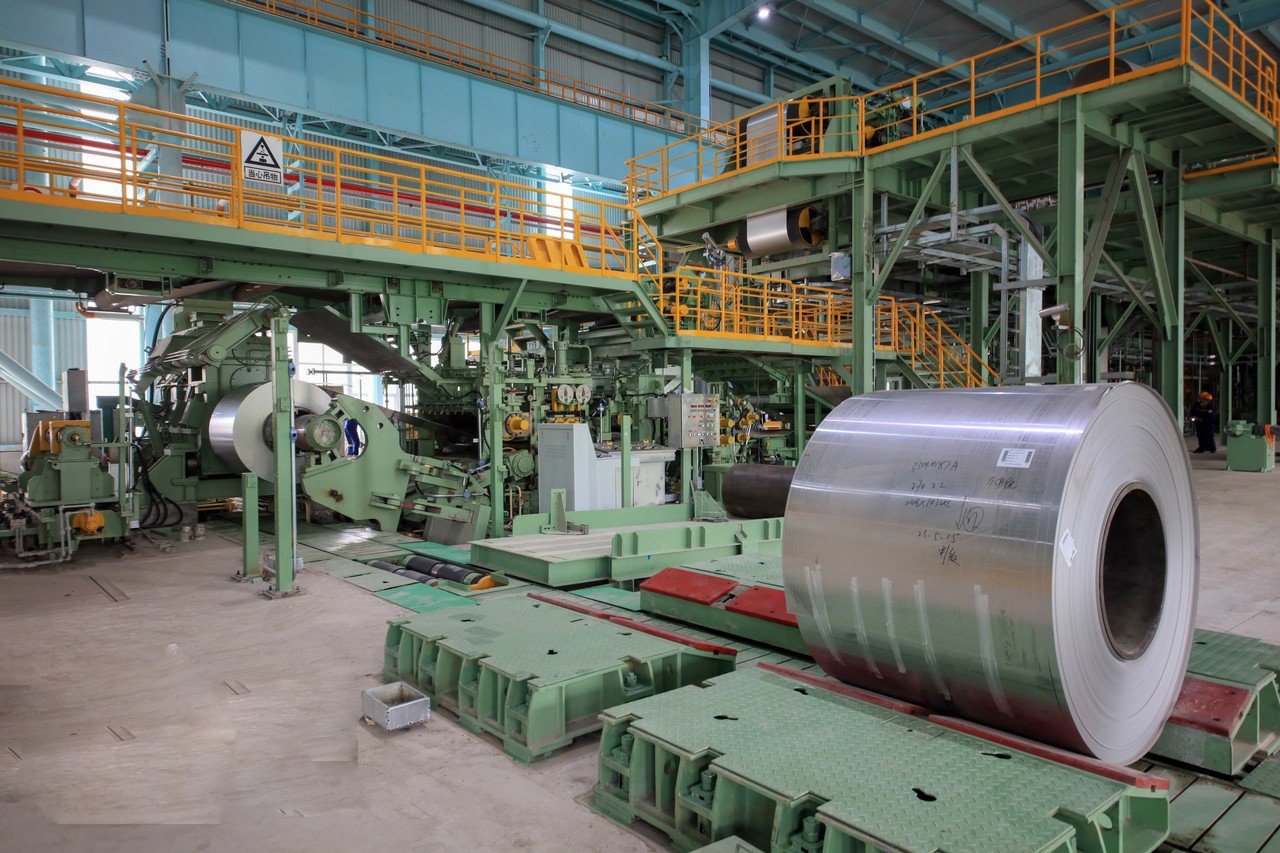
The path to securing flawless stainless steel is riddled with potential pitfalls that can compromise even the most well-written specifications. These challenges are not always obvious; they are often hidden within the opaque layers of a fragmented supply chain. They range from sophisticated material fraud to simple, careless handling errors that can render a high-value product useless. As a solutions provider at MFY, my role is to act as our client’s shield against these risks. By leveraging our integrated structure, deep industry knowledge, and unwavering commitment to transparency, we proactively identify and mitigate these challenges, ensuring the material that arrives on-site is exactly the material that was specified—perfect and ready for its critical mission.
Material Authenticity and Counterfeiting
One of the most insidious threats in the steel industry is the issue of counterfeit and substandard materials. This problem is more widespread than many believe and can manifest in several ways. It can be as blatant as a supplier falsely stamping a lower-grade material, like Grade 304, with a 316L designation3 to fetch a higher price. More subtly, it can involve supplying material that is technically "in-spec" but is from an uncertified mill or has a chemical composition that barely meets the minimum requirements of the standard, making it unsuitable for its intended high-performance application. The consequences of using such material in a desalination plant are severe, leading to premature corrosion and failure.
This type of fraud thrives in complex, non-transparent supply chains where materials pass through multiple hands without independent verification at each stage. Paperwork can be forged, and without physical testing, it's nearly impossible to detect. I recall a distressing case where a client approached us for consultation after experiencing widespread leaks in a recently commissioned chemical processing facility4. Their maintenance team used a portable PMI (Positive Material Identification) analyzer, which we always recommend, and discovered that a significant portion of the installed piping was not the Duplex 2205 grade they had paid a premium for. The cost of replacement was enormous, far exceeding any initial savings.
This is precisely why our protocol at MFY is built on a foundation of "trust, but verify." We maintain direct sourcing relationships with the world's most reputable mills, and we conduct our own independent PMI verification on materials that enter our facilities. We provide our clients with fully traceable, verifiable Mill Test Certificates (MTCs) and encourage them to conduct their own receiving inspections. Our reputation is staked on the authenticity of our products, and we have a zero-tolerance policy for anything less than guaranteed material integrity.
Inconsistencies in Global Manufacturing Standards
While international standards like ASTM and EN provide a crucial framework for quality, they are not a guarantee of uniform performance. These standards specify a range of acceptable values for chemical composition and mechanical properties. A stainless steel sheet that is technically compliant with ASTM A240 might be at the lowest allowable tolerance for a key alloying element5, while another sheet from a different mill might be at the optimal upper end of the range. Both are sold under the same designation, but their real-world performance can be drastically different.
Let's consider Molybdenum (Mo) in Grade 316L, which is critical for its chloride pitting resistance. The ASTM standard allows for a range of 2.0% to 3.0%. A sheet with just 2.1% Mo will have a significantly lower Pitting Resistance Equivalent Number (PREN) than one with 2.8% Mo. For a desalination plant in the high-salinity waters of the Middle East, this difference is not academic; it's the difference between a 25-year service life and a potential failure in under 10 years. "Compliant" does not always mean "suitable."
| Molybdenum % (in 316L) | Other Elements (Typical) | Calculated PREN | Performance Implication |
|---|---|---|---|
| 2.1% (Low End of Spec) | 16.5% Cr, 10.5% Ni | ~23.4 | Minimum acceptable pitting resistance. |
| 2.5% (Mid-Range) | 16.5% Cr, 10.5% Ni | ~24.8 | Good, reliable performance. |
| 2.8% (High End of Spec) | 16.5% Cr, 10.5% Ni | ~25.7 | Optimized performance for higher chloride environments. |
This is where a knowledgeable supply partner becomes invaluable. As I see it, our responsibility extends beyond simply delivering a product that meets a code on paper. We act as our client's materials consultant, understanding the specific service environment of their project. We leverage our relationships with mills to source production runs that meet not just the minimum standard, but the optimal specifications required for longevity and safety. We navigate these manufacturing nuances to ensure the material is perfectly matched to the application.
Logistics, Handling, and Storage Vulnerabilities
A sheet of stainless steel can be manufactured to perfection at the mill and processed flawlessly, only to be ruined during its journey to the project site. The global logistics chain is fraught with risks that can cause physical and chemical damage. Improper handling during loading and unloading with chains or dirty forks can cause deep scratches and gouges that compromise the passive layer. Stacking sheets without proper interleaving paper can lead to surface abrasion. The journey itself, especially long sea voyages, exposes the material to humid, saline air, which can initiate surface corrosion if the packaging is not robust and airtight.
One of the most common and damaging errors is contamination with carbon steel. I saw a case where a shipment of high-quality duplex sheets for a project in Kuwait was stored temporarily at a port facility. The stevedores, unaware of the material's sensitivity, used carbon steel chains to lift the crates6 and stored them in an area where carbon steel grinding was taking place. The free iron particles settled on the stainless steel surfaces, causing widespread galvanic corrosion that appeared as rust spots. A significant portion of this very expensive material had to be scrapped or undergo costly re-passivation treatment.
To combat this, MFY has developed an obsession with logistical control. Our integrated model includes our own warehousing and export teams who are rigorously trained in handling stainless steel. We enforce strict protocols: all material is packaged in sealed plastic and robust wooden crates, sheets are separated by acid-free paper, and we use dedicated "clean" lifting equipment. We provide clear handling instructions to our shipping partners and clients to ensure this chain of custody is maintained all the way to the construction site. Preventing damage during transit is a critical, non-negotiable part of our promise of a zero-defect supply.
Counterfeiting is a major riskПравда
Counterfeit materials with falsified certifications are a widespread issue in the stainless steel supply chain, as highlighted by cases of mislabeled grades.
ASTM compliance guarantees performanceЛожь
ASTM standards allow wide tolerances - materials at opposite ends of the spec range (e.g., 2.1% vs 2.8% Mo in 316L) can have drastically different corrosion resistance.
What solutions can be implemented to overcome these supply challenges in desalination projects?
You're facing supply chain risks that threaten your project's integrity, from counterfeit materials to logistical damage. These challenges can seem daunting, leading to uncertainty about material quality and project timelines. The solution is a strategic, proactive approach to procurement that prioritizes verification and partnership.
To overcome supply challenges, implement a strategy centered on three pillars: partnering with fully integrated suppliers, enforcing a strict regimen of multi-point material testing and verification, and establishing robust, transparent traceability systems from the mill to the final installation site.
The path to securing a zero-defect stainless steel supply is not about finding shortcuts; it's about building a resilient and transparent procurement process. It requires a shift in mindset from a purely transactional relationship with a supplier to a collaborative partnership. In my career at MFY, I’ve championed this approach because it is the only way to effectively counter the inherent risks in the global market. Instead of reacting to problems like a failed inspection or a damaged shipment, a proactive strategy anticipates these issues and builds in safeguards from the very beginning. This involves a deep dive into a potential supplier's capabilities. Do they have their own processing facilities? What are their in-house testing procedures? Can they provide a seamless digital trail for their materials? Asking these tough questions upfront is the first step. By choosing a partner who can provide satisfactory answers and demonstrable proof of their integrated capabilities, you are not just buying steel; you are investing in quality assurance and peace of mind for the entire lifecycle of your project.

Implementing these solutions requires a commitment from all project stakeholders—the end-user, the engineering contractor, and the supply partner. It's a collaborative effort to elevate the standards of the entire supply chain. The goal is to create a "glass pipeline," where the material's quality, history, and handling procedures are visible and verifiable at every stage. This transparency is the ultimate antidote to the challenges of counterfeiting, inconsistency, and damage. At MFY, we have built our business model around this principle. Our investment in advanced processing, digital tracking software, and rigorous testing protocols is our commitment to providing this transparency and delivering not just a product, but a guaranteed solution.
Forging Strategic Partnerships with Integrated Suppliers
The single most effective solution to overcome supply chain challenges is to move away from fragmented, multi-trader models and forge strategic partnerships with vertically integrated suppliers. An integrated supplier, like MFY, controls multiple stages of the supply chain—from raw material sourcing and processing to logistics and export. This consolidation of responsibility into a single point of accountability fundamentally changes the risk equation for the better. When one company manages the entire process, the opportunities for miscommunication, quality lapses between stages, and blame-shifting are virtually eliminated.
Partnering with an integrated supplier provides direct access to expertise and control. Instead of communicating through a chain of brokers, your engineering team can speak directly with the people managing the processing and testing of your material. This allows for a much higher degree of customization and responsiveness. For example, if a specific surface roughness (Ra) value is required for a hygienic application, an integrated supplier can adjust their polishing process and provide surface measurement reports to verify compliance. This level of granular control is nearly impossible when dealing with a disconnected chain of independent companies.
We had a client building a desalination plant in Southeast Asia who had previously been burned by a supplier who delivered sheets with inconsistent thickness. For their new project, they partnered with us. We were able to provide them with production data from our cold-rolling mill, demonstrating our tight thickness tolerances. We then processed the coils on our own cut-to-length line, performing final dimensional checks that were documented and shared with the client before shipping. This end-to-end control provided them with the assurance they needed and resulted in a flawless supply of material for their project.
Implementing a Rigorous Multi-Point Verification System
"Trust, but verify" should be the mantra for any critical material procurement. Relying solely on the MTC from the original mill is no longer sufficient in today's complex market. A robust solution involves implementing a multi-point verification system where the material's key properties are tested at critical junctures in the supply chain. This creates a series of quality gates that substandard material cannot pass through. The first point of verification is upon receipt of the master coils from the mill at the processing facility. Here, a PMI test should be conducted to confirm the alloy grade and composition matches the MTC.
The second critical point is after processing but before final packaging. This is where visual inspections for surface defects, dimensional checks for length, width, and thickness, and any client-specified tests (e.g., ultrasonic testing for internal integrity) should be performed. The final, and equally important, point of verification is a receiving inspection conducted by the contractor or end-user at the project site before the material is accepted and installed. This final check confirms that no damage occurred during transit and that the material delivered is exactly what was ordered.
| Verification Stage | Key Tests Performed | Purpose |
|---|---|---|
| 1. At Processor's Receipt | Positive Material Identification (PMI), MTC review. | Confirms authenticity of alloy from the mill. |
| 2. Post-Processing | Visual Inspection, Dimensional Checks, Optional NDT (e.g., Ultrasonic). | Ensures processing quality and adherence to specifications. |
| 3. At Project Site | Visual Inspection for transit damage, documentation cross-check. | acceptance gate; confirms integrity upon arrival. |
This systematic approach creates a chain of custody for quality itself. At MFY, we build this process into our standard workflow. We provide our own in-house inspection reports to our clients, and we welcome and encourage third-party or client-led inspections at our facilities. This culture of verification is fundamental to delivering on the promise of zero-defect.
Establishing End-to-End Digital Traceability
In the 21st century, a physical product should be accompanied by a digital twin7 of its data. The ultimate solution for ensuring transparency and accountability is the implementation of an end-to-end digital traceability system. This goes far beyond a paper MTC. It involves creating a digital record that follows a specific piece of steel from its birth (the heat number at the mill) through every value-adding step to its final destination. This record should be accessible to the client, providing an unimpeachable history of their material.
This digital thread should contain all relevant documentation: the original MTC, in-house PMI test results, processing parameters, dimensional inspection reports, photos of the finished product and packaging, and shipping details. At MFY, we have invested in developing proprietary software that does exactly this. Each client order is tracked in our system, and we can provide a comprehensive data package that gives them a complete picture of their material's journey. This digital traceability serves two key purposes. First, it provides the ultimate quality assurance, as every claim about the material is backed by data.
Second, it provides invaluable information for asset management over the long term. Decades after a plant is built, if a component needs to be replaced, the maintenance team can access the original digital record to find the exact specifications of the material used. This eliminates guesswork and ensures a like-for-like replacement, safeguarding the long-term integrity of the facility. For a project as critical and long-lasting as a desalination plant, this cradle-to-grave digital record is not a luxury; it is an essential component of modern, responsible supply chain management.
Integrated suppliers reduce riskПравда
Vertically integrated suppliers control multiple stages of the supply chain, eliminating quality lapses between stages and providing single-point accountability.
Mill test certificates are sufficientЛожь
In today's complex market, relying solely on MTCs is inadequate - a multi-point verification system with quality gates is required for critical materials.
What technical recommendations can ensure the success of stainless steel sheet deployment in desalination plants?
Your project's success depends on more than just sourcing good steel; it requires precise technical execution. Small oversights in specification, fabrication, or installation can compromise the integrity of the entire system, leading to premature failures despite using high-quality materials.
Key technical recommendations include creating a material selection map based on micro-environments, enforcing stringent fabrication and welding controls to preserve corrosion resistance, and implementing a comprehensive site handling and installation protocol to prevent contamination and damage.
Ensuring the long-term success of stainless steel in a desalination plant goes beyond the procurement process and into the realm of technical precision and on-site discipline. As a supplier, my responsibility doesn't end when the material is delivered. I believe in partnering with our clients to share the knowledge that ensures the material performs as intended for its entire design life. I have seen projects where perfectly good, high-grade duplex steel failed prematurely, not because of the material itself, but because of improper welding procedures that destroyed its carefully balanced microstructure. Similarly, I've seen contamination from carbon steel tools during installation lead to surface corrosion on brand new equipment. These are not material failures; they are process failures. Therefore, providing clear, actionable technical recommendations is a critical part of a holistic, zero-defect supply solution that protects the client's investment and ensures the ultimate success of the project.
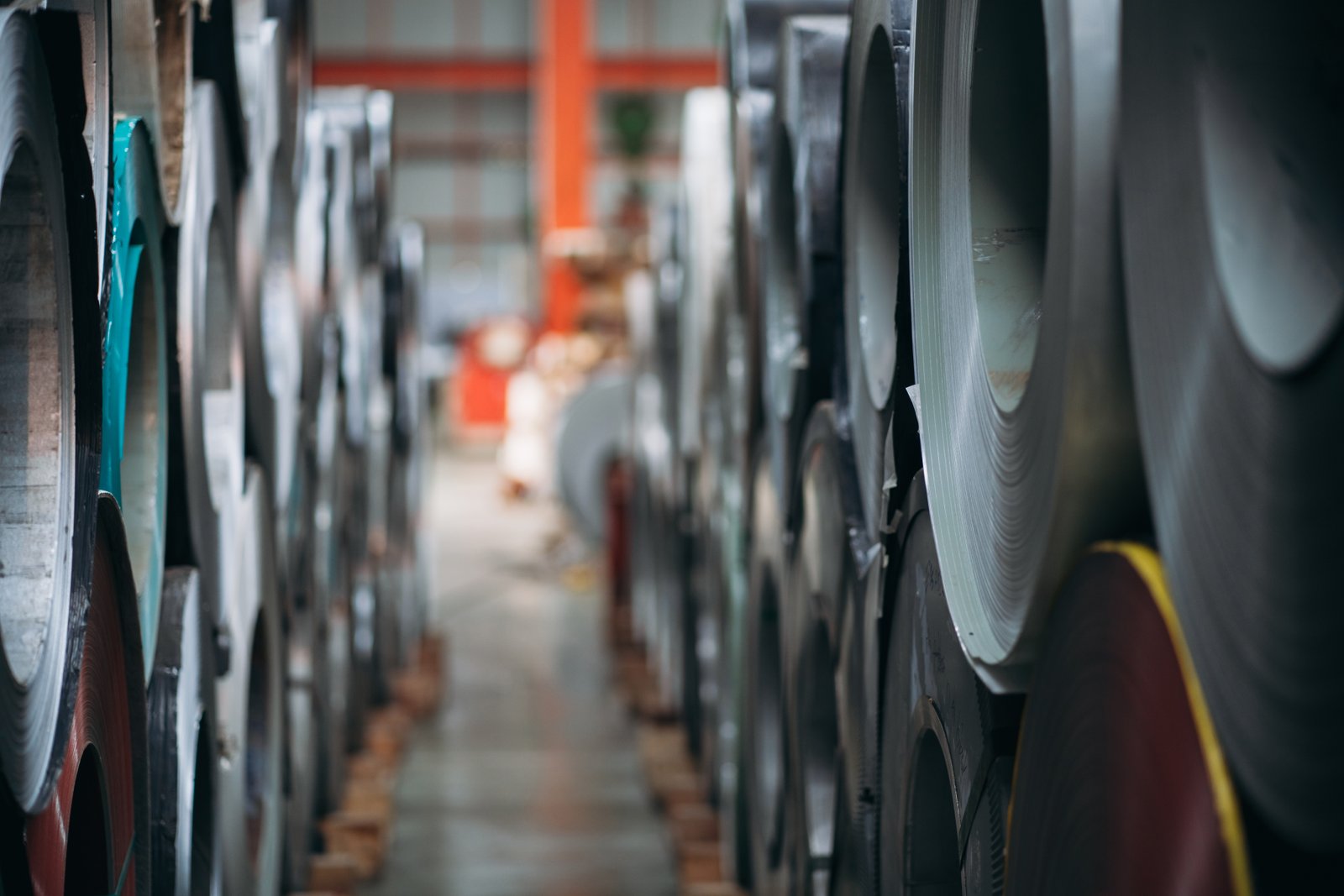
The technical execution phase is where the theoretical advantages of high-grade stainless steel are either realized or lost. It's a critical translation of material science into a durable, real-world asset. A zero-defect sheet of steel can be rendered defective by a single poor weld or a careless scratch from a carbon steel tool. This is why we at MFY see our role as extending into knowledge sharing. We work with our clients' engineering and construction teams to develop and enforce protocols that protect the material's inherent properties throughout fabrication and installation. This collaborative approach ensures that the final constructed system is as flawless as the raw material we supplied.
Creating a Detailed Material Selection Map
A common mistake is to over-simplify material selection, perhaps by specifying one grade of steel for all "wet" parts of the plant. A more sophisticated and cost-effective approach is to create a detailed "material selection map" that specifies the optimal grade for each distinct micro-environment within the facility. Not all parts of a desalination plant experience the same level of temperature, pressure, and chloride concentration. For instance, the initial seawater intake screens might be exposed to raw seawater at ambient temperature, where a grade like Duplex 2205 is perfectly adequate. However, inside the high-pressure SWRO membrane racks, where both pressure and brine concentration are at their peak, a Super Duplex grade like 2507 might be required to provide the necessary margin of safety against corrosion.
Conversely, for structural supports or external cladding not in direct contact with seawater, a leaner grade like 316L or even 304L may be sufficient, offering significant cost savings. Creating this map requires a close collaboration between the plant's process engineers and a material corrosion expert. It involves analyzing flow diagrams, pressure levels, operating temperatures, and chemical concentrations for every single component. The result is a highly optimized design that uses the right material in the right place, balancing performance and cost perfectly.
We often assist our clients in this process, providing data on the performance limits of various grades to help them make informed decisions. This mapping process not only ensures technical success and longevity but also prevents over-engineering, ensuring the project remains financially efficient without compromising on safety or reliability. It is the hallmark of a truly engineered approach to material selection.
Enforcing Strict Fabrication and Welding Controls
Fabrication, and especially welding, is arguably the most critical process in the deployment of stainless steel. An improper weld can completely destroy the corrosion-resistant properties of even the most advanced super duplex alloy. When duplex stainless steels are welded, the heat affects the finely balanced 50/50 austenite-ferrite microstructure. If the cooling rate is too slow, detrimental intermetallic phases can form, drastically reducing both toughness and corrosion resistance. If it's too fast, the ferrite-austenite balance can be thrown off. Therefore, it is absolutely essential to have and enforce a strictly controlled Welding Procedure Specification (WPS).
This WPS must detail every critical parameter: the type of welding process (e.g., GTAW, GMAW), the specific filler metal to be used (which is typically over-alloyed in nickel to promote austenite reformation), the precise range for heat input, and the interpass temperature. All welders working on the project must be qualified specifically for that procedure on that material type. After welding, the weld area and the heat-affected zone (HAZ) must be meticulously cleaned, pickled, and passivated to remove any heat tint or scale and restore the protective chromium oxide passive layer.
To illustrate the importance of this, we analyzed a weld failure for a client. The WPS was correct on paper, but the welders on site were rushing and exceeded the maximum allowable heat input to work faster. This resulted in the formation of sigma phase in the weld, making it brittle and highly susceptible to corrosion. The weld failed during hydro-testing, forcing a costly and time-consuming repair. This is why we recommend our clients implement a rigorous quality control plan for fabrication, including regular inspection of welding parameters and post-weld NDT (Non-Destructive Testing) to ensure the integrity of every single joint.
| Parameter | Control Requirement | Reason |
|---|---|---|
| Heat Input | Strictly controlled within a specified range (e.g., 0.5-1.5 kJ/mm). | Prevents formation of detrimental phases and maintains microstructure. |
| Filler Metal | Specific grade with higher Nickel content. | Promotes correct austenite-ferrite phase balance in the final weld. |
| Post-Weld Cleaning | Mechanical cleaning followed by pickling and passivation. | Removes heat tint and contaminants, restores the passive corrosion layer. |
Implementing "Clean" Site Handling and Installation Protocols
The final stage of deploying stainless steel sheets is just as critical as the preceding ones. All the effort put into sourcing, processing, and fabricating a perfect component can be undone by careless handling and installation at the construction site. The single biggest risk is contamination by carbon steel. If a worker uses a carbon steel grinder on a stainless steel pipe, or uses a carbon steel hammer to adjust a component, iron particles can become embedded in the stainless surface. In the presence of moisture, these particles will rust, leading to galvanic corrosion that can pit and compromise the stainless steel.
To prevent this, a strict "clean site" protocol must be established and enforced. This means having a dedicated area for stainless steel fabrication and storage, completely separate from any carbon steel work. All tools used on stainless steel—grinders, brushes, clamps, wrenches—must be made of stainless steel themselves or be non-metallic. These tools should be clearly marked and segregated to prevent accidental cross-contamination. Workers should even wear clean gloves to avoid transferring contaminants to the material surface.
I always share a story with our clients about a new tank installation. The tank itself was flawless Super Duplex. However, during installation, the contractor used carbon steel scaffolding, and rain washed rust from the scaffold tubes onto the new tank surface, causing cosmetic staining and requiring extensive, costly cleaning and re-passivation before the plant could be commissioned. This simple oversight created weeks of delay. By implementing and training all site personnel on these clean handling protocols, such costly and entirely preventable mistakes can be avoided, ensuring the final installation remains as pristine and corrosion-resistant as it was designed to be.
Material selection must be micro-environment specificПравда
Different areas of a desalination plant experience varying corrosion conditions, requiring tailored material grades for optimal performance and cost-efficiency.
One stainless grade suits all plant areasЛожь
Using a single grade throughout the plant leads to either over-engineering (unnecessary cost) or under-protection (premature failures) in different micro-environments.
Заключение
Ultimately, achieving a zero-defect stainless steel supply for a critical desalination project hinges on a strategic shift. It requires moving beyond transactional purchasing to forging partnerships with integrated suppliers, rigorously verifying material at every stage, and maintaining strict technical discipline from fabrication through to final installation.
-
Learn about the advantages of using duplex steel for corrosion resistance in extreme conditions. ↩
-
Understand a key process in refining stainless steel ↩
-
Tips for verifying the authenticity of stainless steel materials ↩
-
Learn from real-life incidents to avoid similar quality issues ↩
-
Understand the tolerances and their implications in applications ↩
-
Avoid common pitfalls in stainless steel logistics and handling ↩
-
Explore the role of digital twins in providing comprehensive material traceability and management ↩
У вас есть вопросы или нужна дополнительная информация?
Свяжитесь с нами, чтобы получить индивидуальную помощь и квалифицированный совет.
